Supply chain services & consulting
Supply Chain Management (SCM) or supply chain management is a complex challenge, even for professionals. There are interrelationships along the entire value chain of a product within a company that are not always immediately apparent.
With our special analysis approaches , proven in countless projects and , we replace the fog of gut feeling with facts and clear correlations. We underpin solutions with technical aids and implement changes quickly.

Inventory reduction
Better planning and control of stock enables managers to reduce storage costs and free up capital that can be invested elsewhere.
Cost savings
Optimising the supply chain leads to considerable cost savings by minimising inefficient processes, stock levels and transport costs.
Delivery capability
An optimised supply chain enables companies to improve delivery capability and ensure that products are delivered to customers on time, which increases customer satisfaction.
Risk minimisation
Effective supply chain optimisation helps to minimise risks caused by supplier problems, natural disasters or other unforeseen events.
Transparency
Modern supply chain management tools provide business leaders with better visibility of their supply chain and enable advanced data analyses to make informed decisions.
Competitive advantage
Companies that successfully optimise their supply chain gain a competitive advantage by reacting more quickly to market developments, offering better customer service and working more efficiently overall.
Our solutions for your potential
- All
- Distribution
- Finance & Controlling
- IT
- Production
- Purchasing & Procurement
- S&OP
Supply Chain Experts
Abels & Kemmner brings the optimization potential of supply chains to light and replaces gut feeling with facts.
Thanks to our unique consulting approach, we help companies to develop sustainable concepts that we validate and optimize and implement in a secure and agile manner.
Innovation & experience
As a pioneer in logistics simulation and automation in supply chain management, we combine strategic and operational consulting with powerful digital methods.
A&K’s clients include TOP100 performers in the German SME and large industrial sectors.
Supply chain concepts that A&K has developed with its customers have won several best practice awards.













































Data-based simulation
by means of a digital twin

Our expertise in the quantitative improvement of supply chain processes and the application of dynamic simulations plays a key role in helping our customers to achieve superior competitiveness.
Bernd Reineke
for the best possible transparency &
decision-making basis
What customers say
Our partnership with Abels & Kemmner has enabled us not only to significantly optimize our production processes and increase our efficiency, but also to increase customer satisfaction by significantly improving on-time delivery. This cooperation has proven to be decisive in meeting our high standards of quality and service.

The logistical analysis and simulation showed us, as in a crash test, where our optimization potential lies and how we can leverage it. On this basis, we have implemented solutions along the value chain that make us more resilient to disruptions and enable customer-oriented management.

The project with Abels & Kemmner has shown us how we can secure our delivery readiness, reduce stock levels and cut delivery times to the market.

As a leading quality provider of printable media, I would like to share our positive experience with Abels & Kemmner Supply Chain Management Consulting. Their logistical simulation has led to a remarkable increase in the transparency of our value chains. Thanks to this collaboration, we have a constant overview of our stocks, their values (NWC) and stock ranges and can manage the company safely. We also have the opportunity to react more dynamically to economic situations.

